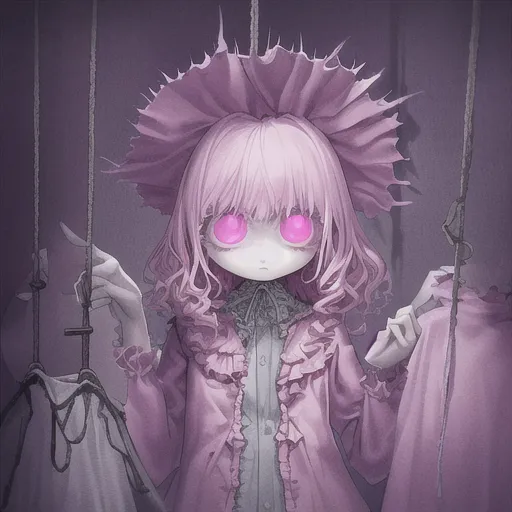
Are you ready to face your worst nightmares , but this time , they’re intelligent? Forget predictable jump scares and mindless zombies. The future of horror gaming is here , and it’s driven by artificial intelligence (AI). Get ready to explore how AI-driven enemies are revolutionizing the horror genre , creating experiences that are more terrifying , unpredictable , and unforgettable than ever before. This article delves into the chilling world of AI in horror games , exploring its impact on enemy design , gameplay mechanics , and the overall horror experience. We’ll examine how AI is changing the way we experience fear in games , providing examples of titles that are pushing the boundaries of what’s possible. We’ll also discuss the implications for multiplayer horror games and offer a glimpse into the future of AI in the genre. So , dim the lights , put on your headphones , and prepare to be scared. Let’s dive into the world of AI-driven horror enemies.
The Rise of Intelligent Fear: AI in Horror Games
For years , horror games have relied on jump scares and predictable enemy patterns to elicit fear. But what happens when the monsters become truly intelligent? AI-driven enemies are revolutionizing the genre , offering a new level of challenge and unpredictability that keeps players on the edge of their seats. These aren’t your typical zombies mindlessly shuffling towards you; these are creatures that learn , adapt , and hunt you with cunning and precision.
How AI is Changing Horror Enemies
Traditional horror game enemies often follow pre-programmed paths and behaviors. Once you figure out their patterns , the fear diminishes. AI changes everything. Here’s how:
- Adaptive Behavior: AI enemies can learn from your actions. If you consistently use a certain plan , they’ll adapt and find ways to counter it. This forces you to constantly rethink your approach and keeps you guessing.
- Unpredictable Movement: Forget predictable patrol routes. AI enemies can move in unpredictable ways , making it harder to anticipate their attacks and escape their grasp.
- Dynamic Decision-Making: AI allows enemies to make decisions based on the current situation. They can select to flank you , set traps , or even call for reinforcements , creating a more dynamic and challenging experience.
- Personalized Horror: Imagine an enemy that learns your fears and exploits them. AI can analyze your gameplay and tailor the horror experience to your specific vulnerabilities , making it even more terrifying.
Examples of AI-Driven Horror Enemies
Several games have already begun to experiment with AI-driven horror enemies , showcasing the potential of this technology:
Alien: Isolation: The Xenomorph in Alien: Isolation* is a prime example of AI-driven horror. It doesn’t follow a script; instead , it roams the space station , listening for sounds and reacting to your movements. Its unpredictable behavior makes every encounter a terrifying game of cat and mouse.
SOMA: SOMA* attributes enemies that are not only terrifying in appearance but also possess a disturbing level of intelligence. They communicate with each other , coordinate their attacks , and even try to trick you into making mistakes.
The Last of Us Part II: While not solely reliant on AI , The Last of Us Part II* attributes enemies that exhibit realistic and intelligent behavior. They flank you , use cover , and communicate with each other , creating a sense of realism and danger.
These are just a few examples , and as AI technology continues to evolve , we can expect to see even more innovative and terrifying AI-driven enemies in the future.
The Impact on Multiplayer Horror Games
AI isn’t just changing single-player horror games; it’s also having a significant impact on multiplayer experiences. Imagine playing a cooperative horror game where the enemies are controlled by a sophisticated AI that adapts to your team’s strategies and approachs. This could lead to incredibly challenging and rewarding gameplay experiences.
Furthermore , AI could be used to create dynamic and unpredictable environments in multiplayer horror games. For example , the AI could control the layout of the map , the placement of resources , and the behavior of environmental hazards , ensuring that no two playthroughs are ever the same. Keep an eye out for Multiplayer Access Options as developers explore these possibilities.
Looking Ahead: The Future of AI in Horror
The future of AI in horror games is bright. As AI technology continues to advance , we can expect to see even more sophisticated and terrifying enemies that blur the line between reality and fiction. Imagine enemies that can learn your deepest fears , adapt to your playstyle in real-time , and even communicate with you in a disturbing and unsettling way.
We can also expect to see AI used to create more immersive and dynamic horror environments. Imagine a haunted house that changes its layout based on your reactions , or a forest that seems to be alive and watching your every move. The possibilities are endless.
Don’t forget to check out Early Access & Previews to get a glimpse of these upcoming innovations. The integration of AI into horror games promises to deliver unparalleled levels of fear and immersion , pushing the boundaries of the genre and redefining what it means to be scared.
The future of horror gaming is undeniably intertwined with AI. As developers continue to push the boundaries of what’s possible, we can expect to see even more sophisticated and terrifying AI-driven enemies that adapt to our playstyles and create truly unique and unforgettable horror experiences. Keep an eye on Horror Game attributes & Trends to stay updated on the latest innovations, and don’t miss out on Multiplayer Access Options and Early Access & Previews to get a sneak peek at the horrors to come. The age of intelligent fear is upon us , and it’s only going to get scarier.
